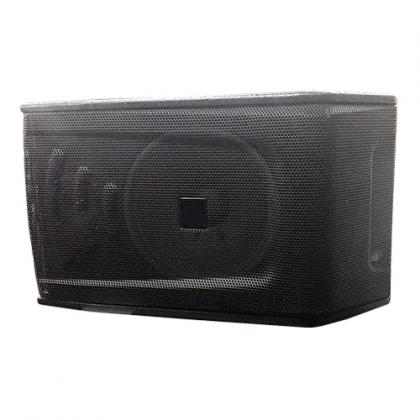Guanxing Electronics - Enping Guanxing Electronics Factory site!
企业QQ :2853265911
联系电话 :86-0750-7781218
邮箱:sales@cha-prpmic.com
网址:www.cha-promic.com
所在地址 :广东省恩平市侨兴街9号

The combination of speakers and power amplifiers mainly considers four aspects: power, power reserve, impedance, and damping coefficient.
1. Power matching
In order to meet the requirements of high-fidelity listening, the rated power should be determined according to the listening sound pressure. We all have this feeling: when the volume is small, the sound is weak, thin, unable to come out dynamically, dull, noticeably lacking in low frequency, poor fullness, and the sound seems to be shrunk inside and can't come out. When the volume is right, the sound is natural, clear, round, soft, full, powerful, and dynamic. However, when the volume is too high, the sound is blunt, not soft, rough, and has the feeling of rooting in the ears. Therefore, the replay sound pressure level has a greater relationship with the sound quality. The sound pressure level of the listening area is specified as 80~85dB (A-weighted). We can calculate the sound pressure level of the speaker from the distance from the listening area to the speaker and the characteristic sensitivity of the speaker. Rated power and the rated power of the power amplifier.
2. Power reserve matching
Loudspeaker: In order to enable it to withstand the impact of strong bursts in the program signal without being damaged or distorted. Here is an empirical value for reference: the nominal rated power of the selected speaker should be three times the theoretically calculated power.
Power amplifier: Compared with a transistor power amplifier, a tube power amplifier requires a different power reserve. This is because the overload curve of the tube amplifier is relatively flat. For the peak of the music signal that is overloaded, the tube power amplifier does not obviously produce clipping, but only rounds the peak of the peak. This is what we often call flexible shear peaks. After the transistor power is placed at the overload point, the non-linear distortion increases rapidly, causing serious clipping of the signal. It does not round the peak but cuts it neatly. Someone used a composite impedance composed of resistance, inductance, and capacitance to simulate speakers, and tested the actual output capabilities of several high-quality transistor power amplifiers. The results show that when the load has a phase shift, there is a nominal 100W power amplifier, and the actual output power is only 5W when the distortion is 1%! Therefore, the selection of the reserve amount of the transistor power amplifier:
High fidelity power amplifier: 10 times
Civilian high-position power amplifier: 6 to 7 times
Civil mid-range power amplifier: 3 to 4 times
The tube power amplifier can be much smaller than the above ratio.
How much margin should be left for the average sound pressure level and loud sound pressure level of the system depends on the content of the program and the working environment. This redundancy is 10dB lower. For modern pop music, bungee music and other music, you need to leave 20~25dB redundancy, so that the audio system can work safely and stably.
Three, impedance matching
It refers to the rated output impedance of the power amplifier, which should be consistent with the rated impedance of the speaker. At this time, the power amplifier is in the state of the designed load line, so it can give undistorted power. If the rated impedance of the speaker is greater than the rated output impedance of the power amplifier, the actual output power of the power amplifier will be less than the rated output power. If the rated impedance of the speaker is less than the rated output impedance of the power amplifier, the audio system can work, but the power amplifier is in danger of overload. The power amplifier is required to have complete overcurrent protection measures to solve it. The impedance matching requirements for the tube power amplifier are more stringent.
Fourth, the matching of damping coefficient
The damping coefficient KD is defined as: KD= rated output impedance of the power amplifier (equal to the rated impedance of the speaker)/power amplifier output internal resistance. Since the internal resistance of the power amplifier output has actually become the resistance of the speaker, the KD value determines the amount of resistance experienced by the speaker. The larger the KD value is, the heavier the resistance is. Of course, the KD value of the power amplifier is not the better. Too much KD will make the speaker resistance too heavy, so that the pulse front settling time will increase and the transient response index will be reduced. Therefore, one-sided pursuit of a large KD value should not be one-sided when choosing a power amplifier. As a household high-fidelity power amplifier damping coefficient, there is an empirical value for reference, low requirements: the KD value of the transistor power amplifier is greater than or equal to 40, and the KD value of the tube power amplifier is greater than or equal to 6.
The basic conditions to ensure good sound performance in steady state and transient state, attention should be paid to the coordination of the equivalent mechanical quality factor (Qm) of the speaker and the damping coefficient (KD) of the amplifier. This coordination requires the speaker's feeder to be used as the overall sound system Part of it to consider. The equivalent resistance of the feeder of the speaker should be small enough to be negligible compared with the rated impedance of the speaker. In fact, the power loss of the speaker feeder should be less than 0.5dB (about 12%) to achieve this coordination.
● QQ :2853265911
● Phone :86-0750-7781218
● Email:sales@cha-promic.com
● Address :9 Qiaoxing Street, Enping City, Guangdong Province
● Foreign managers:WuXianSheng :13025860630
● Domestic manager :YuXiaoJie :18026822165
● Domestic manager:LiuXianSheng :18026876191
● Technical Manager : Yang : 18026826391

Copyright ©Speakers and amplifiers need to be matched like this-恩平市冠星电子厂!粤ICP备2021042115号-1
